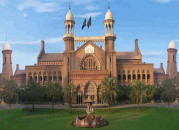Shattered heritage
We have a large number of monuments, temples, forts and monasteries but only a few have gained intl recognition.

A wall inscription in New York says, “It is true that history cannot satisfy our appetite when we are hungry, nor keep us warm when the cold wind blows. But it is true that if younger generations do not understand the hardship and triumphs of their elders, then we will be a people without a past. As such we will be like water without a source, a tree without roots.”
Luckily, we are custodian of a rich heritage and unluckily we have proved ourselves incompetent when it comes to the protection of this heritage.
Owing to a dearth of finances in the hands of the departments concerned and a society that is least bothered about history, there is now little focus on the preservation of historical sites in the country. The heritage ministry and its sub-departments’ performance regarding the preservation of heritage has remained below the mark, speaking volumes about the condition of heritage sites.
From Khyber to Karachi to Gwadar to Azad Kashmir, we have a large number of monuments, temples, forts and monasteries. Only a few of them have gained international recognition.
More than 800 heritage sites in Hazara Division and over 100 sites in only three districts of Muzaffarabad have been mapped by the students of Hazara University Mansehra and Quaid-e-Azam University Islamabad between 2005 and 2013 respectively. Likewise, a ruined Buddhist monastery, spread over a deserted hillock near Karer village, some 26 kilometres from Mansehra is in row for excavation.
The situation is similar in the Azad Kashmir where, as per the survey conducted by archaeologists, the majority of the heritage sites, linked to Mughals, Dogras and Sikhs are covered with wild shrubs and some of them are being used as shelter homes for drug addicts. The survey was the first try of the students to document the heritage in Azad Kashmir in 120 years.
After the Eighteenth Amendment, the heritage ministry has been given under the direct control of the provincial governments. Almost four years have elapsed since, but the relevant department’s performance has remained as it was under federal control.
Published in The Express Tribune, April 7th, 2014.



















COMMENTS
Comments are moderated and generally will be posted if they are on-topic and not abusive.
For more information, please see our Comments FAQ